Community Groups Oppose the Next WIPP Radiation Release
![]() It’s all about the airflow in the underground mine at the Waste Isolation Pilot Plant (WIPP) because of the contamination from the February 2014 radiation release. Since that time, the three main fans that ventilated the underground by pulling air through the mine have been shut down because the filters to remove contaminants were not designed for so much airflow. WIPP is proposing a test restart this month of one of those fans, which will release plutonium and americium to the environment.
It’s all about the airflow in the underground mine at the Waste Isolation Pilot Plant (WIPP) because of the contamination from the February 2014 radiation release. Since that time, the three main fans that ventilated the underground by pulling air through the mine have been shut down because the filters to remove contaminants were not designed for so much airflow. WIPP is proposing a test restart this month of one of those fans, which will release plutonium and americium to the environment. 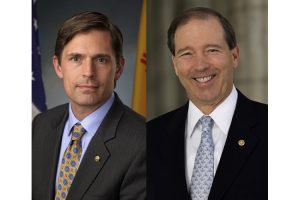 No report has been made available for public review and comment about the amount of contamination that could be released and the costs and benefits of potentially running the fan continuously in the future. https://wipp.energy.gov/
No report has been made available for public review and comment about the amount of contamination that could be released and the costs and benefits of potentially running the fan continuously in the future. https://wipp.energy.gov/
On Wednesday, Southwest Research and Information Center http://www.sric.org/ , Nuclear Watch New Mexico https://nukewatch.org/ , and CCNS http://nuclearactive.org/ wrote a letter to U.S. Senators Tom Udall https://www.tomudall.senate.gov/ and Martin Heinrich https://www.heinrich.senate.gov/ about this urgent matter of worker and public health and safety. The non-governmental organizations (NGOs) wrote that they oppose this plan “which is dangerous for the workers and the public.” They noted the Department of Energy “has made no public documentation available to justify the test and future use of the fan.” Udall-Heinrich 700c letterfinal
That documentation, which has been promised for more than three months to the NGOs, has not been made available. That documentation has also been promised to the Defense Nuclear Facility Safety Board, the Environmental Protection Agency, and the New Mexico Environment Department.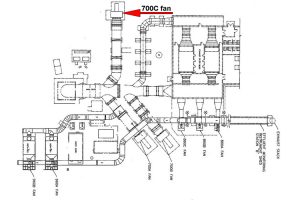
Since 2014, airflow is filtered to remove contaminants, which has reduced the number of workers and equipment allowed in the mine. In an effort to restore the previous number of workers and equipment, WIPP is proposing to test the 700-C fan, which is located on the surface near the exhaust shaft. The air released during the test would not be filtered.
WIPP asked the Consortium for Risk Evaluation with Stakeholder Participation (CRESP) to conduct an independent assessment of the plan. http://www.cresp.org/ CRESP’s report has not been publicly released, but it was summarized in a June 5, 2020 Defense Nuclear Facilities Safety Board monthly report. https://www.dnfsb.gov/documents/reports/monthly-site-reports/wipp-monthly-ending-may-2020
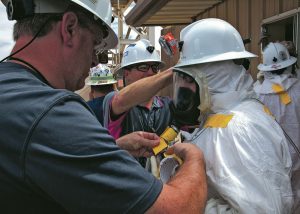 According to the Board’s report, CRESP concluded that some radioactivity would be released. CRESP recommended that WIPP provide a report to the public with an estimate of the amount of radioactivity that could be released; assurance that the necessary personal protective equipment is available; establishment of clear limits for when to stop the test; and plans for the careful inspection of the ductwork, hardware and control systems before the proposed testing begins.
According to the Board’s report, CRESP concluded that some radioactivity would be released. CRESP recommended that WIPP provide a report to the public with an estimate of the amount of radioactivity that could be released; assurance that the necessary personal protective equipment is available; establishment of clear limits for when to stop the test; and plans for the careful inspection of the ductwork, hardware and control systems before the proposed testing begins.
The three NGOs also recommended to Senators Udall and Heinrich that the report include the number of workers that would be allowed in both the underground and on the surface during the test, the plans for independent real-time monitoring, and a cost-benefit study.
As of press time, we are awaiting a response from the Senators’ offices and WIPP.
- Monday, December 7th from 4 pm to 6:45 pm MST –
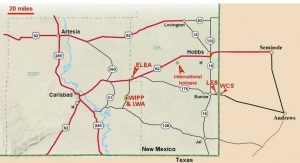 Public Comments from New Mexicans, Texans, and those residing along the transportation routes from Vermont Yankee to proposed consolidated interim storage facilities (CISF) by Holtec, Int’l and Interim Storage Partners/Waste Control Specialists. Meeting of the Vermont Nuclear Decommissioning Citizens Advisory Panel: a top agenda item will be whether the full panel should reconsider its 2015 endorsement in favor of the proposed CISF facilities in NM and TX. To attend: 12-7-2020 VT NDCAP Meeting
Public Comments from New Mexicans, Texans, and those residing along the transportation routes from Vermont Yankee to proposed consolidated interim storage facilities (CISF) by Holtec, Int’l and Interim Storage Partners/Waste Control Specialists. Meeting of the Vermont Nuclear Decommissioning Citizens Advisory Panel: a top agenda item will be whether the full panel should reconsider its 2015 endorsement in favor of the proposed CISF facilities in NM and TX. To attend: 12-7-2020 VT NDCAP Meeting
- Wednesday, December 9th at 1 pm MST –
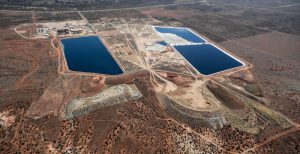 White Mesa Uranium Mill National Virtual Town Hall. “Located just three miles from the Ute Mountain Ute Tribe’s White Mesa community and one mile from Bears Ears National Monument, the White Mesa Uranium Mill was originally designed to run for 15 years before being closed and cleaned up.” It’s still operating 40 years later. Hear about the nuclear fuel cycle, impacts to Indigenous communities, and what you can do to help stop the ongoing harm by closing and cleaning up the mill. Advance registration required: https://us02web.zoom.us/meeting/register/tZwufuGtqD8sG9MnxjrQ5sGnjbFarg5b2Zk0
White Mesa Uranium Mill National Virtual Town Hall. “Located just three miles from the Ute Mountain Ute Tribe’s White Mesa community and one mile from Bears Ears National Monument, the White Mesa Uranium Mill was originally designed to run for 15 years before being closed and cleaned up.” It’s still operating 40 years later. Hear about the nuclear fuel cycle, impacts to Indigenous communities, and what you can do to help stop the ongoing harm by closing and cleaning up the mill. Advance registration required: https://us02web.zoom.us/meeting/register/tZwufuGtqD8sG9MnxjrQ5sGnjbFarg5b2Zk0
Facebook: https://www.facebook.com/events/203391351307164
Listen to the Southern Utah Wilderness Alliance (SUWA) latest Wild Utah podcast about the White Mesa issues and the National Town Hall. https://suwa.org/wild-utah-podcast-episode-19-indigenous-justice-at-white-mesa-utah/
- Wednesday, December 9th from 4:30 – 6 pm MST –
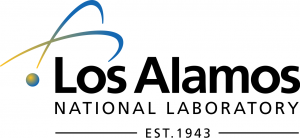 virtual LANL training for its Electronic Public Reading Room as required by the NM Environment Department hazardous waste permit for LANL, Section 1.10. For more information: envoutreach@lanl.gov or call 505-667-3792.
virtual LANL training for its Electronic Public Reading Room as required by the NM Environment Department hazardous waste permit for LANL, Section 1.10. For more information: envoutreach@lanl.gov or call 505-667-3792.
LANL Electronic Public Reading Room and the Los Alamos Legacy Cleanup Electronic Public Reading Room can be accessed at http://eprr.lanl.gov.
The handbook for the Triad EPRR can be accessed at: https://www.lanl.gov/environment/public-reading-room.php
WebEx Link: https://lanl-us.webex.com/lanlus/j.php?MTID=md7d124bec1218bd3639955cbf5421a52
Meeting No.: 133 546 9742
Video address: 1335469742@lanl-us.webex.com
PIN: EPRR
Call In No.: 1-415-655-0002
Call Access No.: 133 546 9742
Tags: 700C Fan, CCNS, Consortium for Risk Evaluation with Stakeholder Participation, CRESP, Defense Nuclear Facilities Safety Board, Department of Energy, Environmental Protection Agency, New Mexico Environment Department, Nuclear Watch New Mexico, Senator Martin Heinrich, Senator Tom Udall, Southwest Research and Information Center, Waste Isolation Pilot Plant, WIPP


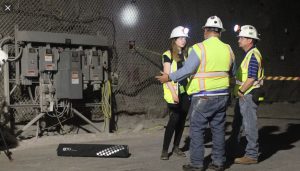













Comments
No comments so far.